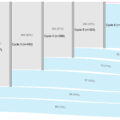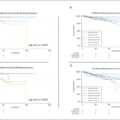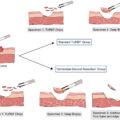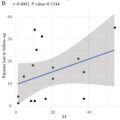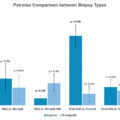Abstract
Background
Burnout is a significant issue among GU oncologists, driven by increasing workloads and the emotional demands of patient care. This study aims to identify the prevalence, risk factors, and potential interventions to address burnout in this population.
Methods
A comprehensive survey, including a visual mood assessment, was conducted among 674 GU oncologists. The survey assessed work conditions, mood, and burnout indicators, alongside demographic and professional characteristics.
Results
Among the respondents, 72% (482 out of 674) displaying symptoms of burnout, characterized by high emotional exhaustion and/or depersonalization. Key risk factors included long working hours (more than 8 hours per day for 54% of respondents), high patient volumes (48% managing over 15 patients daily), and night shifts (16%). Despite signs of burnout in 72% of participants, a visual mood assessment showed that 72% reported being in a good or excellent mood. Additionally, 92% of respondents expressed passion for their work, and 84% showed a strong desire for professional development.
Conclusions
Burnout is prevalent among GU oncologists, despite their dedication to their profession. Strategic interventions, such as expanding the workforce and reducing daily patient volumes, are essential to mitigate burnout and improve well-being.
1
Introduction
The increasing incidence of genitourinary (GU) cancers presents significant challenges for healthcare systems, including its impact on the mental health of GU oncologists. Over the next 15 years, prostate, kidney and urothelial cancers will be among the 5 most common tumors in men [ ]. The growing number of patients with GU cancers can lead to an increasing burden on GU oncologists. Burnout is defined as an occupational-related syndrome characterized by physical and emotional exhaustion, cynicism/depersonalization, and low sense of professional accomplishment [ ]. Factors contributing to burnout include prolonged working hours, high patient loads, emotionally taxing end-of-life care, and limited access to mental health resources [ ].
Burnout is a significant concern among healthcare professionals, with oncologists in the Eurasian region particularly affected due to the demanding nature of their work. A study examining burnout in Eurasian oncologists found that nearly 45% of respondents exhibited signs of emotional exhaustion and depersonalization, while 35% reported reduced personal accomplishment [ ]. Another screening survey of the Russian Society of Clinical Oncology (RUSSCO) showed that 71.6% of oncologists have expressed emotional burnout syndrome [ ]. In the Eurasian context, systemic challenges, such as resource constraints in lower-income countries and administrative burdens in higher-income nations, exacerbate stress levels. Limited training on coping mechanisms and mental health support further intensifies burnout. Cultural stigmas around seeking psychological help also contribute to the problem.
There is limited published data on emotional burnout among oncologists working with GU cancers. The Bureau for Cancer Research (BUCARE) conducted a study to assess the prevalence of burnout among GU oncologists in several Eurasian countries.
2
Methods
This cross-sectional survey was conducted among 674 practicing surgical, medical, and radiation oncologists from Kazakhstan, Russia, Uzbekistan, Azerbaijan, Georgia, Kyrgyzstan, Tajikistan, and Israel. Data collection occurred during the ASCO/Asian American GU Symposium held in Almaty in April 2023. All respondents were invited to participate via a QR code linking to the survey, with full disclosure of the survey’s purpose provided beforehand. The web-based online survey was created using the platform bucare.org. The survey was distributed online to participants, ensuring anonymity and voluntary participation. The investigation was overseen by all authors, who served as committee members for the Symposium. They ensured data reliability and conducted the analysis of the results.
The primary objective was the prevalence of burnout among GU oncologists. Burnout was assessed using the adapted self-administered questionnaire [ ]. The questionnaire comprised 19 questions designed to evaluate 3 dimensions of burnout such as emotional exhaustion, depersonalization, and personal accomplishment ( Supplementary 1 ). The final question included a visual picture with 4 emoticons describing an emotional state. Responses were analyzed to determine the prevalence and severity of burnout across the region, providing insights into the specific challenges faced by GU oncology professionals.
Baseline respondents’ characteristics were analyzed using descriptive statistics, including means, medians, and proportions. The association between respondents’ characteristics and the presence of burnout was analyzed using chi-square tests. This method assessed relationships between demographic, professional, and work-related factors and burnout symptoms, providing insights into potential predictors and contributing factors for burnout among GU oncology specialists. All univariable associations of burnout with professional and personal characteristics were included in the multivariable analysis.
Daily work hours are intended to represent an average over the entire year.
3
Results
All 674 participants completed the survey in full. The cohort was evenly divided by gender, with 50% identifying as female and 50% as male. The majority of participants were medical oncologists (45%), followed by surgeons (35%) and radiation oncologists (15%). More than half of the participants worked in hospital inpatient departments (65%). Among physicians who reported being overburdened with work, 54% work more than 8 hours per day, 48% see over 15 patients daily, and 16% work night shifts.
Among the respondents, 92% expressed strong interest in their daily work, and 84% demonstrated a keen enthusiasm for further professional development, reflecting a generally positive attitude towards their profession. Despite high levels of professional interest, burnout emerged as a significant concern, with 72% (482 out of 674) of respondents displaying symptoms of burnout, characterized by high emotional exhaustion and/or depersonalization. Among 654 respondents, 410 (61%) expressed desire to seek psychological support, signaling awareness and readiness to address mental health challenges. Additionally, 172 (26%) reported having no time to communicate with their family, and 401 (60%) indicated only partial ability to do so ( Supplement 2 ). Univariable associations of burnout with professional and personal characteristics are presented in Table 1 .
| Characteristics | All | Burnout | |
|---|---|---|---|
| N (%) | P | ||
| All (%) | 674 (100) | 482 (72) | |
| Age, years, median (range) | 40.18 (29 – 60) | ||
| <50 years | 406 (60) | 301 (74) | 0.8 |
| ≥50 years | 268 (40) | 181 (68) | |
| Gender, n (%) | |||
| Female | 337 (50%) | 292 (87) | < 0.001 |
| Male | 337 (50%) | 190 (56) | |
| Specialty, n (%) | |||
| Medical oncologists Surgical oncologists Radiation oncologists Other | 303 (45%) 236 (35%) 101 (15%) 34 (5%) | 223 (74) 198 (84) 43 (43) 18 (53) | 0.06 a 0.002 a |
| Department, n (%) | |||
| In-patient | 438 (65%) | 309 (71) | 0.9 |
| Out-patient | 236 (35%) | 173 (73) | |
| Work experience in an oncology, years, median | 14.7 | ||
| <15 years | 319 (47) | 234 (73) | 0.9 |
| ≥15 years | 373 (53) | 248 (70) | |
| Duration of the working day (number of hours per day, n (%) | |||
| ≤8 | 301 (45) | 180 (60) | < 0.001 |
| >8 | 373 (55) | 302 (81) | |
| Number of patients during the working day, n (%) | |||
| <15 | 341 (51) | 199 (58) | < 0.001 |
| ≥15 | 313 (46) | 283 (90) | |
| Nights on-call, n (%) | |||
| Yes | 103 (16) | 78 (76) | 0.9 |
| No | 551 (84) | 404 (73) | |
Stay updated, free articles. Join our Telegram channel

Full access? Get Clinical Tree




